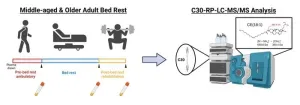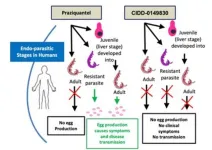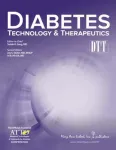(Press-News.org) Scientists report they have extracted a compound with powerful antibacterial properties from the skin of farmed African catfish. Although additional testing is necessary to prove the compound is safe and effective for use as future antibiotic, the researchers say it could one day represent a potent new tool against antimicrobial-resistant bacteria such as extended-spectrum beta-lactamase (ESBL) producing E. coli.
Hedmon Okella is a postdoctoral researcher at the University of California, Davis, and led the project.
“The global public health threat due to antimicrobial resistance necessitates the search for safe and effective new antibacterial compounds,” Okella said. “In this case, fish-derived antimicrobial peptides present a promising source of potential leads.”
Okella will present the new research at Discover BMB, the annual meeting of the American Society for Biochemistry and Molecular Biology, which is being held March 23–26 in San Antonio.
For the study, the researchers extracted several peptides (short chains of amino acids) from African catfish skin mucus and used machine learning algorithms to screen them for potential antibacterial activity. They then chemically synthesized the most promising peptide, called NACAP-II, and tested its efficacy and safety on ESBL-E. coli and mammalian blood cells, respectively.
These tests showed that NACAP-II caused the bacteria to break open, or lyse, without appearing to harm the mammalian blood cells. “Preliminary findings indicate that this promising peptide candidate potentially disrupts the bacterial cell envelope to cause lysis at a very low concentration,” Okella said.
The place where the peptide was found — in the mucus on the skin of farmed African catfish — is not as unlikely as it may seem. As anyone who has tried to hold one can attest, fish are enveloped in a slippery layer of mucus. This mucus is known to protect the fish against infections by physically carrying germs off of the skin and by producing antimicrobial compounds such as the one Okella’s team isolated.
Many existing medicines are based on compounds that were first found in nature, and scientists speculate that marine and aquatic organisms represent a particularly rich — though largely untapped — source of bioactive compounds.
As a next step, the researchers plan to study the peptide’s effects in animal models and explore strategies to produce it inexpensively.
“We are currently utilizing chemical synthesis to upscale the production of this peptide that we believe will one day be of use as drug candidate in the battle against antimicrobial resistance,” Okella said.
Hedmon Okella will present this research from 4:30 to 6:30 p.m. CDT on Sunday, March 24, in the exhibit hall of the Henry B. González Convention Center (Poster Board No. 86) (abstract). Contact the media team for more information or to obtain a free press pass to attend the meeting.
About the American Society for Biochemistry and Molecular Biology (ASBMB)
The ASBMB is a nonprofit scientific and educational organization with more than 12,000 members worldwide. Founded in 1906 to advance the science of biochemistry and molecular biology, the society publishes three peer-reviewed journals, advocates for funding of basic research and education, supports science education at all levels, and promotes the diversity of individuals entering the scientific workforce. www.asbmb.org
Find more news briefs at: https://discoverbmb.asbmb.org/newsroom.
###
END
A new study examining cholesteryl esters suggests that periods of prolonged inactivity may affect people differently depending on their age. Cholesteryl esters — which consist of cholesterol molecules bonded with fatty acids — store and transport cholesterol throughout the body.
As people get older, their risk of being hospitalized or bedridden increases. These long periods of inactivity come with a host of negative health effects such as reduced insulin function and loss of lean muscle, bone mass and strength. Scientists are working to better understand the biology involved in these changes so that ...
A newly developed compound is showing promise in animal studies as a more effective treatment for human schistosomiasis, an understudied tropical disease caused by parasitic worms. The spread of schistosomiasis, a disease responsible for nearly 12,000 deaths globally each year, has been documented in 78 nations.
Although schistosomiasis transmission tends to occur in tropical and subtropical areas, climate change could shift it into new areas such as southern Europe. There is currently no vaccine available for the disease, which comes with severe clinical symptoms. The drug praziquantel is used for treatment. However, resistant mutations ...
New research conducted in mice offers insights into what’s going on at the molecular level that could cause people with diabetes to develop Alzheimer’s disease.
The study adds to a growing body of research on the links between Type 2 diabetes and Alzheimer’s disease, which some scientists have called “Type 3 diabetes.” The findings suggest that it should be possible to reduce the risk of Alzheimer’s by keeping diabetes well controlled or avoiding it in the first place, according to researchers.
Narendra Kumar, an associate professor at Texas A&M University in College ...
A new way to classify tuberculosis (TB) that aims to improve focus on the early stages of the disease has been presented by an international team involving researchers at UCL.
The new framework, published in The Lancet Respiratory Medicine, seeks to replace the approach of the last half century of defining TB as either active (i.e., causing illness and potentially infectious to others) or latent (being infected with the bacterium that causes TB [M tuberculosis] but feeling well and not infectious to others) – an approach researchers say is limiting progress in eradicating the disease.
Of ...
**Note: the release below is a special early release from the European Congress of Clinical Microbiology and Infectious Diseases (ECCMID 2024, Barcelona, Spain, 27-30 April). Please credit the congress if you use this story**
A study of two large European patient cohorts has found that for every 10% increase in butyrate-producing bacteria in a patient’s gut, the risk of hospitalisation for any infection falls by between 14 and 25% across two large national cohorts. The study will be presented at this year’s European Congress of Clinical Microbiology and Infectious Diseases (ECCMID 2024) in Barcelona, Spain (27-30 April) and is by ...
Research led by Macquarie University sheds new light on how concentrations of metals used in renewable energy technologies can be transported from deep within the Earth's interior mantle by low temperature, carbon-rich melts.
The findings published this week in the journal Science Advances may assist global efforts to find these valuable raw materials.
An international team led by Dr Isra Ezad, a postdoctoral research fellow from Macquarie University’s School of Natural Sciences, carried out high pressure ...
A new study in the peer-reviewed journal Diabetes Technology & Therapeutics (DTT) evaluated the use of tirzepatide in overweight/obese adults with type 1 diabetes. Click here to read the article now.
Tirzepatide is approved for managing type 2 diabetes. It improves glucose control, facilitates weight loss, and improves cardiovascular disease outcomes.
Satish Garg, MD, from the University of Colorado Denver, and coauthors, compared a group of adults with type 1 diabetes who were prescribed tirzepatide (off-label) to a control group of adults with ...
It’s one of life’s most defining moments—that crucial step in embryonic development, when an indistinct ball of cells rearranges itself into the orderly three-layered structure that sets the stage for all to come. Known as gastrulation, this crucial process unfolds in the third week of human development. “Gastrulation is the origin of our own individualization, the emergence of our axis,” says Rockefeller’s Ali Brivanlou. “It is the first moment that separates our heads from our behinds.”
Observing the molecular underpinnings of this pivotal event would go a long way toward helping scientists prevent miscarriages and developmental ...
CORVALLIS, Ore. – Arachnophobia can make humans flee at the sight of a brown recluse, black widow or even a daddy long legs, but animal predators of spiders know no such fear.
That’s why, paleobiologist George Poinar Jr. explains, some spider species have developed the defense of deception. They masquerade as a much less desirable prey – ants – and Poinar’s recent paper in Historical Biology presents an early record of an ant-mimicking spider in fossilized resin.
“Ants are particularly good creatures for spiders to pretend to be – many animals ...
In cases of Alzheimer’s disease, it’s common for a spouse to take on the role of caregiver. Research led by the University of California, Davis, suggests that patients can also support their caretakers, and that reciprocated care has mutual benefits.
A new paper published in the journal Aging and Mental Health highlights that couples coping with dementia can navigate the challenges with greater resilience and well-being by working together and supporting each other.
“We know that dementia is degenerative, there’s no way back, and spousal caregivers typically ...




